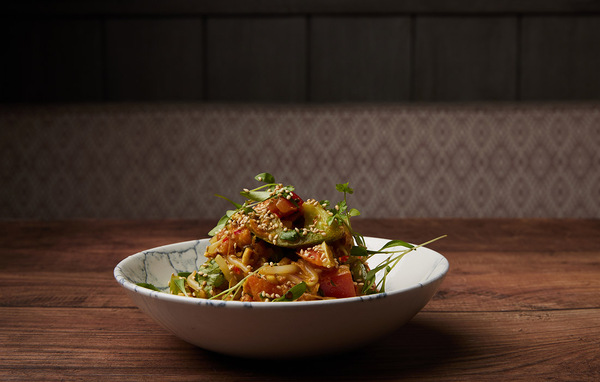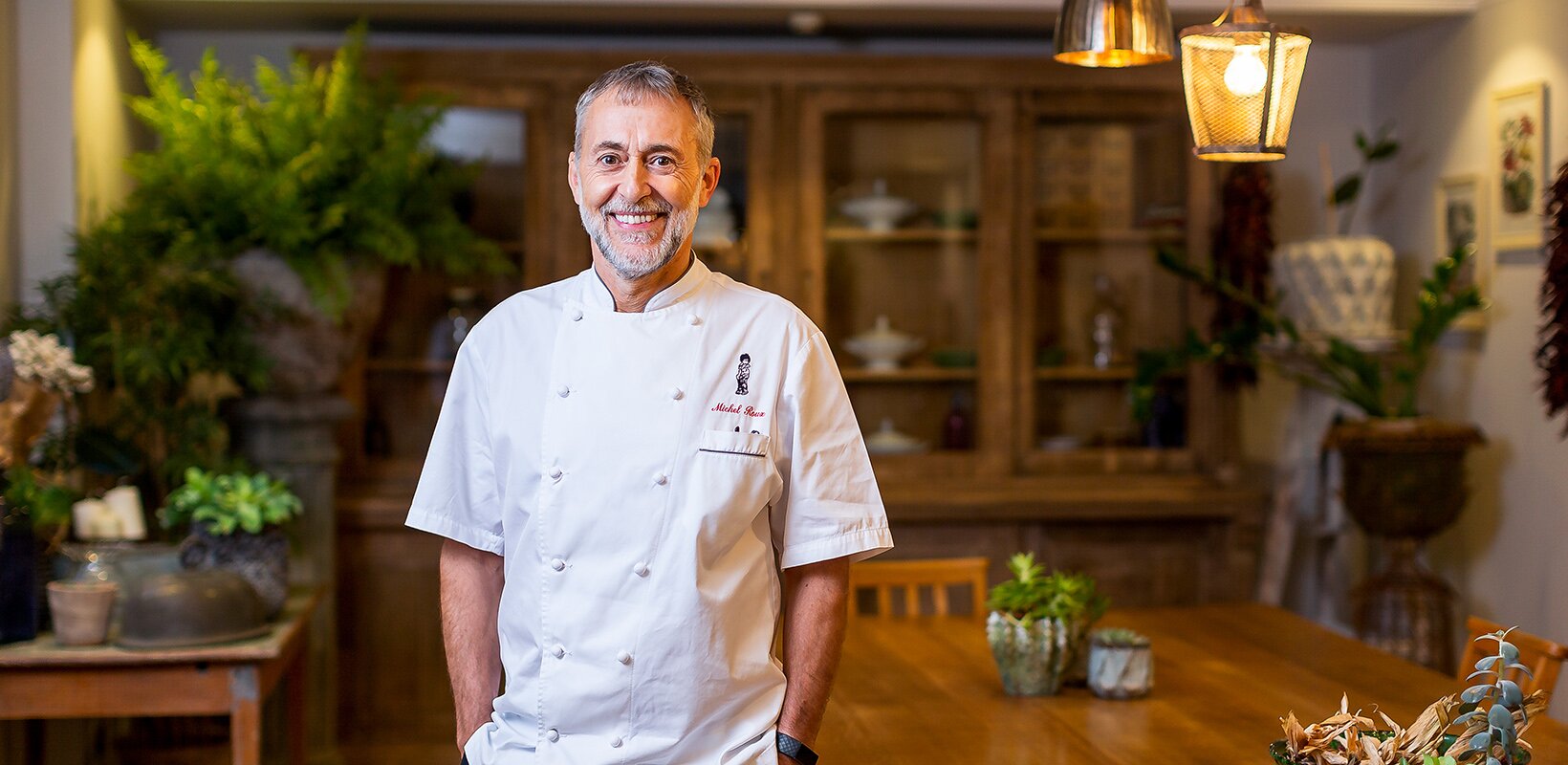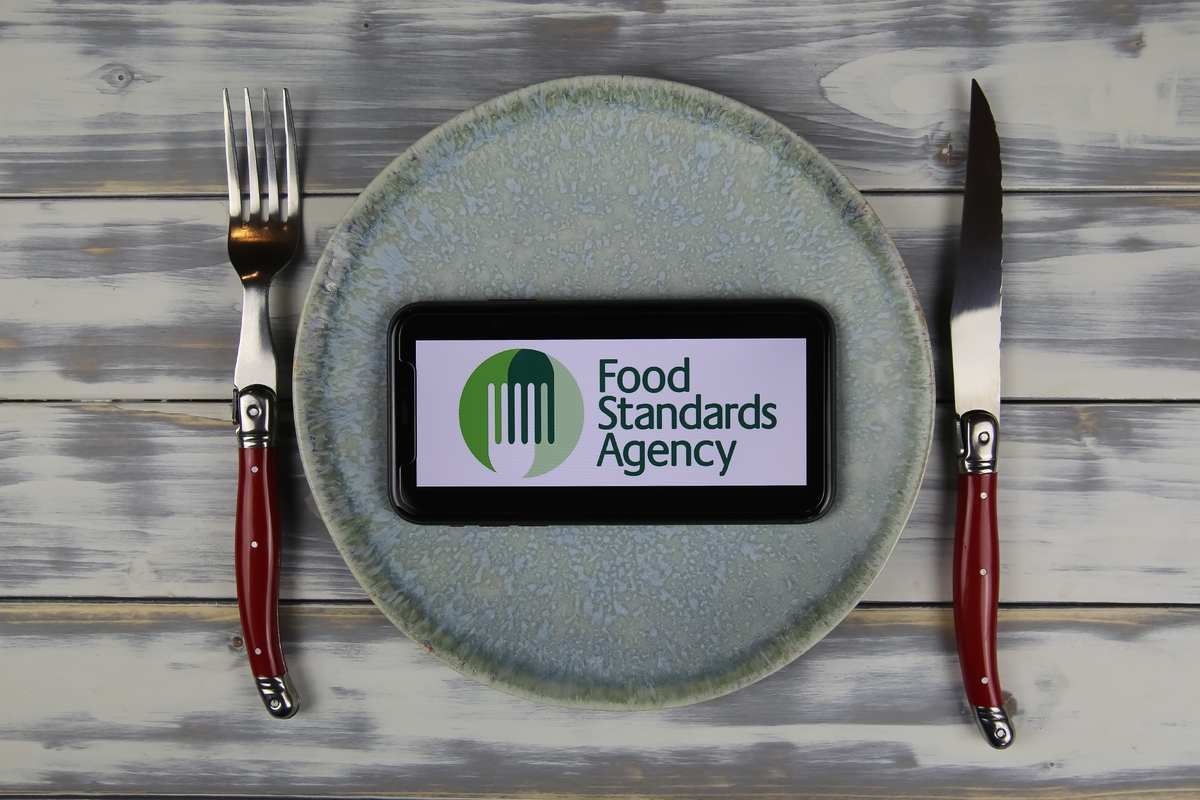Monkfish and huss
Skate, monkfish, huss and shark are all cartilaginous fish. They donât have that comb-shaped conformation of bones that most flat and round fish have, and they donât have little bones either.
What the fishmonger delivers to the kitchen is usually a large block of meat bisected by a cartilaginous backbone. At first glance, it may look as though there is little trimming to do and that they are high yielding compared with flatfish, oily fish and the cod family. Yet this is hardly the case. The tail of an average-sized monkfish weighing 1.75kg loses more than half its weight in trim. Fully prepped, the humble dogfish (or huss), belonging to the shark family, costs as much as a sirloin steak.
Twenty-five years ago, about the time Alan Davidson wrote his comprehensive North Atlantic Seafood, huss and monkfish were both selling along the south coast of England for 30p a pound. Since then, their relative fortunes have changed. Monkfish has risen to the premier league of restaurant fish, leaving its rival in the lower division. The reason is more to do with texture and cooking than with taste.
Monkfish is firm and meaty. Tails may weigh up to 3.5kg, though these large specimens are rarer than they once were. It lends itself to pan-frying, and itâs better when lightly cooked.
Filleting and trimming monkfish
1. Feel for the line of the head. Cut around one fin, under the head and around the second fin. This will expose the join where the head meets the backbone. Cut through this and discard the head and all the entrails that come with it. (Note: decapitation is something you wonâÂÂt normally have to do. The cheeks on a 5kg fish weigh about 50g each, and the liver is prized for soup in Japan.)
ÃÂ
2. Lay with its rounded surface up and lift an edge of the slippery skin above the backbone. Cut between it and the sinew over the tail meat. Pull off the skin to expose the tail.
ÃÂ
3. The tail is covered with a thick muscular membrane. Put the knife under the loose flap of flank and start loosening the membrane coat from the tail meat. Work on one side of the bone then the other. Start with a knife but you can ease your fingers between the flesh and the membrane.
ÃÂ
4. Using the cartilaginous backbone as a guide, cut a line down the length of the tail. Keeping the knife tight against the cartilage, ease away one side of the tail: âÂÂLike taking a sirloin off the bone,â says Farthing. Next, take off the second side.
ÃÂ
5. The bone can be washed thoroughly and used in stock, mainly for its gelatinous properties.
ÃÂ
6. Lay each fillet flat with the skin side up. Trim away a final, thinner layer of sinew. Turn it over so the belly side is uppermost. Trim away any traces of blood or discoloration.
ÃÂ
Monkfish Yield
Weight (head on): 5kg
Head to tail ratio: 3.25 to 1.75
Fully trimmed tail fillets: 2 x 400g
Trimmed weight as a percentage of tail: 46%
Percentage yield: 16%
Monkfish tails: ã9 per kg
Trimmed cost per kg: ã19.50
Cost of six main-course portions (about 160g): ã3.25 per portion
Cost per 100g starter portion: ã1.95
Filleting and trimming huss Fishmongers will usually skin huss for their customers. ItâÂÂs easy to do âÂÂ" if you have strong forearms.
1. Snip off all the fins and tail with kitchen scissors.
ÃÂ
2. Feel for the âÂÂVâ marking the back of the head and cut on either side of it to expose the backbone. Cut off the head.
ÃÂ
3. Put the fish on a chopping board, belly up. Cut in a straight line from the anus to the tail.
ÃÂ
4. Loosen a flap of skin at the head end. (This is the tricky bit. If the loosened flap isnâÂÂt square to start with, thereâÂÂs a chance of tearing later.) Put a hook through the cartilage of the backbone and hang the fish from a hook at head height. Take the skin and pull it off the meat.
ÃÂ
5. Lay the skinned huss on the board again, rounded side up. Cut along the line of the backbone and remove one half of the fillet. Turn over the fish and free the second fillet.
ÃÂ
6. Trim the edges of the fillets to obtain a neat finish, taking special care around the belly. If the final appearance matters, you can pare away any blemishes or staining on the flesh.
ÃÂ
Huss Yield
Weight (head on, gutted): 2.2kg
Fully trimmed fillets: 2 x 300g
Trimmed weight as a percentage: 27%
Spur huss: ã2.50 per kg (ã5.80 skinned)
Cost price trimmed fillet: ã9.20 per kg
(Prices vary depending on the variety of huss. Dogfish âÂÂ" spotted dogs âÂÂ" are half the price of spur dogs.)
The freshness of fish
Every chef recognises the telltale ammonia smell of a skate thatâÂÂs starting to go off. All cartilaginous fish, including huss and monkfish, give the same warning signal. ItâÂÂs due to urea (a compound of urine) in their blood and tissues. After a fishâÂÂs death this compound starts to break down and its smell grows progressively stronger.
With a huss or monkfish any light smell disappears with cooking, provided that the fish was relatively fresh to start with. It gives a rank, unpleasant taste if it wasnâÂÂt.
The best clue to freshness is the colour of the blood. On all types of huss, blood should be bright and rosy. If itâÂÂs turning brown, avoid it. With monkfish, look for the odd blotches of blood under the belly and at the neck. If itâÂÂs not quite fresh, be wary.
Monkfish will keep longer than huss âÂÂ" up to a week from the time it was caught âÂÂ" when stored on ice in a dedicated fish fridge.
All about ramon
Ramon Farthing started his career as an apprentice in a fish restaurant, Gerald MilsomâÂÂs the Pier at Harwich. When he and wife Karen bought 36 on the Quay at Emsworth, between Chichester and Portsmouth, the wheel had gone full circle.
In the 20 intervening years he earned his first Michelin star at Calcot Manor in the Cotswolds at the age of 25 âÂÂ" making him one of the youngest British chefs to achieve the accolade âÂÂ" before moving to HarveyâÂÂs in Bristol. There he turned around the wine merchantâÂÂs venerable time-warped cellar restaurant, bringing it the kind of stylish food that suited its world-class wine list. His move to the west coast brought immediate recognition from Michelin and three AA rosettes.
His approach to working with fish combines the enthusiasm of Rick Stein with the technical competence of Gordon Ramsay. He cooks as well with cod, skate and huss as with the highly-priced turbot, sole and bass.
| ÃÂ |
Etouffée of Huss (serves two)
Photos é Sam Bailey





















